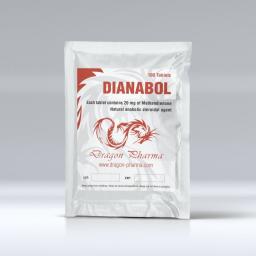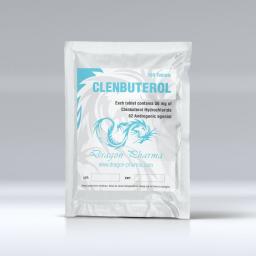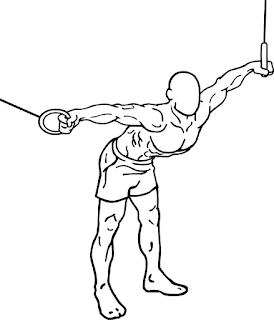The number one reason bodybuilders think they're
"hard-gainers", is they don't take in enough protein.
Anyone who's flipped through a bodybuilding magazine while standing in line at the supermarket has some vague understanding that protein equals muscle, somehow. Just why that is may be a mystery to some people and the short answer is...protein is muscle.
Protein can be described as the connective and supportive tissue found in virtually all natural consumables. If it once lived and you can eat it, likely it's high in protein. It is essentially a combination of hormones, enzymes (created through the combination and utilization of various amino acids) and amino acids; all of which are important to the function of the body, after all the human body is 15% protein.
If you didn't already know,
amino acids are the building blocks of the body; they act as the bricks and mortar for muscle growth, tissue regeneration and the general development of the body. Combined with those hormones and enzymes they enable or better yet, facilitate efficient metabolic processes throughout the body; protein is one of the most important elements of any athlete's diet.
The most common and easiest form of protein to understand is animal
protein, which as should be obvious, comes from animals. It is the muscle and connective tissues in their flesh; when you eat a steak, you're consuming the muscle fibers (protein) of whatever part of the cow you've chosen to grill on the barbeque. (We'll talk about the difference between red and white meat a little later)
The second most common form of consumed protein comes from
plants (separated into two categories;
soy and whey); wheat's, lentils (beans etc) and in a round about way, milk and cheese. The differences between animal and plant forms of protein, boil down to the amino acid content of each variety, and their differing ratios of essential and non-essential amino acids.
So now that you're thoroughly confused by the 'what' of protein, le's look at the 'why'. Bodybuilders, as a unique type of athlete, compete in a way that is different than any other sport; generally speaking, it is advantageous for an athlete to trim weight, gain strength and provide enough fuel (carbohydrates) for their body to complete whatever task their sport involves.
For a
bodybuilder though, the ultimate goal is one of physical growth, and while they do need to gain strength and keep their gas tank full (most of the time), the foremost concern of the bodybuilder is muscle gain. The task of lifting weight is secondary to the goal of bodybuilding, and as such the bodybuilder is concerned not only with fueling his body so there is enough energy to move the required weight; but also, he is concerned with maintaining enough fuel and elemental building blocks in his cells to repair the damage done through the resistance training, in turn gaining muscle.
The importance of loading and maintaining the correct amount of protein is simply, if you don't have enough of the stuff when you need it, your body will take what it needs from your own muscles, to the obvious detriment of the goal of gaining muscle. This process is typically known as cannibalization or atrophy; wherein you have not provided enough amino acids through diet to repair broken down tissues, leaving your body with no choice but to seek those amino acids from areas of the body with less of a need for repair. Hence, the
"hard-gainer" believing that his genetics are keeping him from growing, instead of his diet.
How much protein should you take in to avoid cannibalization? Again, the easy answer is 1.5 to 2 grams of protein per pound of bodyweight. While you do that math in your head, I'll tell you that for the average bodybuilder at 190 to 200lbs that's between 270 and 400 grams of protein per day.
Lets put that into perspective; consuming a single breast of chicken, a glass or two of milk, maybe some lentils and a nice juicy steak over the course of a day, you might take in 80 to 100 grams of protein. We all know most people eat much less than that, skipping breakfast and feasting on carbohydrates all day. This means that most people take in far less protein than would be required to consistently and efficiently gain lean muscle mass, let alone maintain an increased volume of muscle mass.
You might be asking, how exactly a person is supposed to eat enough food to provide that much protein, and the answer is simpler than you might think. Every supermarket,
drug store and
health food store these days is peddling some variety of protein powder, or meal replacement powder or weight gainer. With some exceptions, these products offer the same thing, concentrated protein. With designer flavors and different recipes from various brand names offering additives that provide other select benefits, combining protein powder with water, milk or even low fat yogurt is a tasty and effective way to increase your protein intake considerably, though man cannot live on milk shakes alone.
Be sure to select a brand of protein powder that offers a high quality mix of whey protein, take note of any additives that may bring the carbohydrate content higher than is reasonable for such a product. While there are many varieties available, it would be best for anyone wishing to gain muscle while maintaining a tight, lean body index, to select a protein powder that is pure whey protein only, with no additives or enhancements. Pure is better, every time.
The main staples of a bodybuilder's protein intake regime are more often than not a combination of protein shakes, chicken and tuna. Spread out across six or seven meals in a day, each one consisting of those three foods, plus intelligent choices of complex carbohydrate and fib...it's relatively easy to fill your body with enough protein to build the physique you want.
In essence, a bodybuilder's day should be interspersed with relatively small meals, spaced approximately two to three hours apart. Each of those meals should be high in protein with a ratio of approximately 3:1 for
protein and
carbs /
fats.
Now, it may not please your pallet to scarf down a boiled chicken breast for breakfast and it's probably not the best use for that protein either. While there's really no bad time to fit in a good protein rich meal, there are better times to metabolize certain
foods. For instance, depending on your workout schedule (am vs. pm), it would be best to consume a meal higher in carbohydrates first thing in the morning, to fuel the day ahead, supplementing that meal with a protein shake.
Your last meal before your daily workout (at least 30 minutes prior to beginning the workout) should also be higher in quickly digested carbohydrates, such as fruit and other foods high in fructose, again to fuel your workout; following the workout with a high protein snack, whether that be a shake or a protein bar, is a good way to ensure your body has enough amino acids when it needs them most. Lastly, and some would argue the validity of this, your final meal of the day would do well to consist of protein only, thus providing your body with an ample store of aminos, critical enzymes and hormones for muscle fiber production while you sleep, and not giving opportunity for un-metabolized carbohydrates to turn into fat stores.
Don't forget to mix in a good, name brand
multi-vitamin /
multi-mineral and plenty of
water, and you should be well on your way to creating the right diet for your needs.
So now you know the importance of protein in your
bodybuilding diet; you know what you need and how much, and not only that, but you know when to eat it. Protein is the single most important element in a successful bodybuilders tool kit, understand protein and how it works and you'll be further ahead than the guy next to you; and the next time you hear someone call themselves a "
hard-gainer", ask them how much protein they take in, and smile when they tell you that protein isn't related to their bodybuilding difficulties.
















